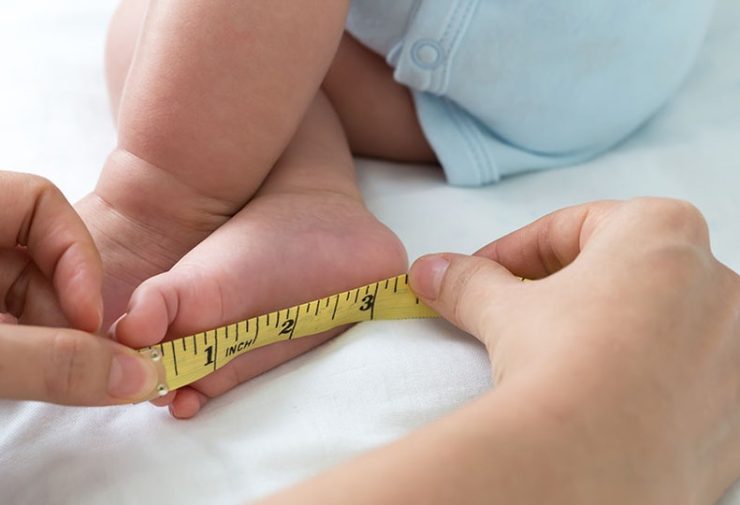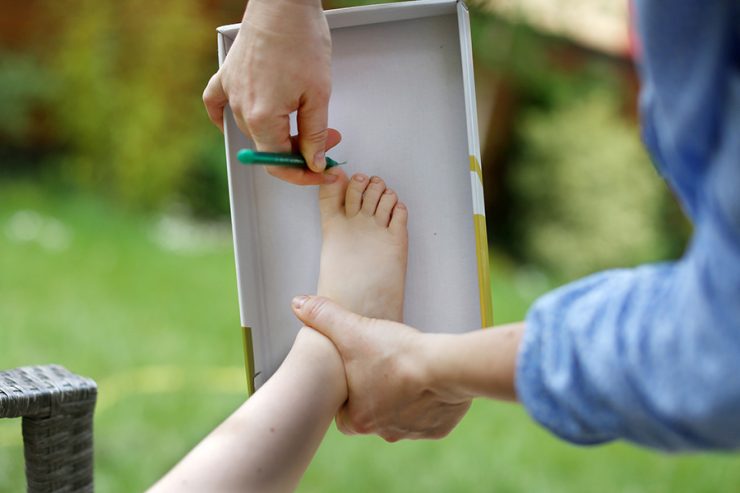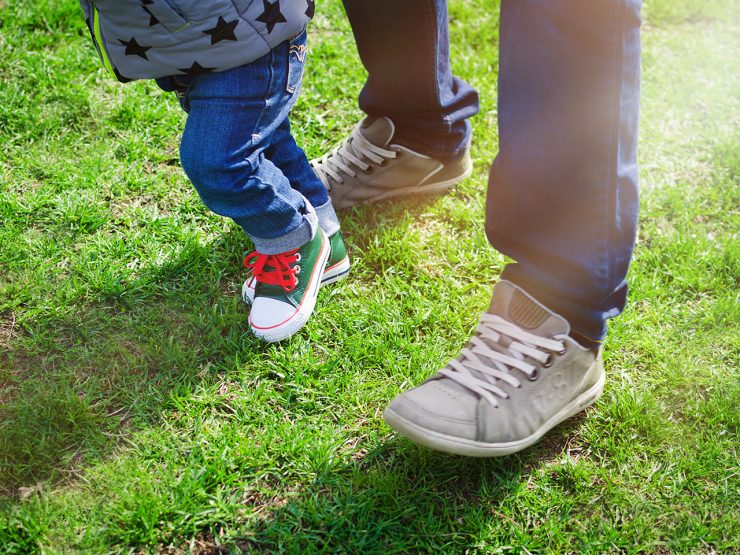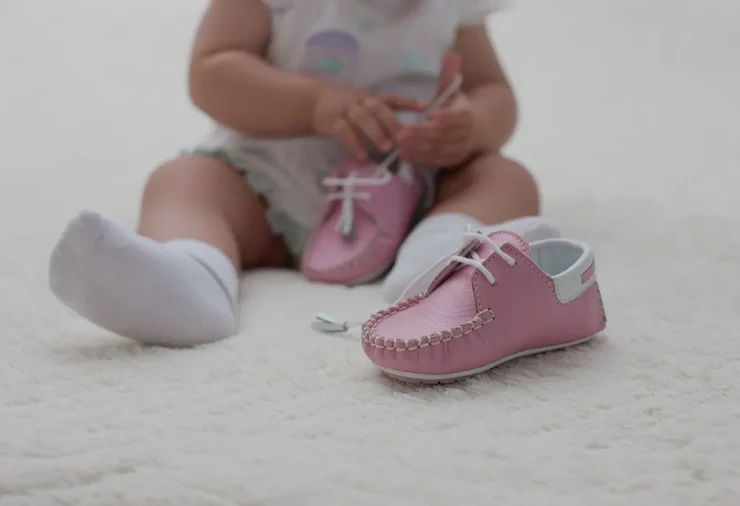You can fight on this one if you want, but there is nothing cuter than babies’ feet. Their pudgy little potato feet and teeny-weeny curled-up toes are just too much. But as a parent, you know that those sweet feet need the right kind of care – and that includes making sure they’re properly shod.
That’s why it’s so important to measure your baby’s feet before buying shoes. Unfortunately, babies grow quickly, so their foot size can change a lot in just a few months. That means you might have to measure their feet several times throughout their first year (or even more frequently if they seem to be growing particularly quickly).
Thankfully, measuring your baby’s feet at home is easy and only takes a few minutes. Here’s how to do it! But first…
Why It’s Important To Measure Baby Shoe Size?

This one’s kind of a no-brainer, but for all the concerned parents, here goes: babies need shoes that fit well. That might seem obvious, but it’s actually really important.
First of all, shoes that are too big can be dangerous. They can cause trips and falls, and they can also make your baby’s feet more susceptible to injury.
Shoes that are too small are also a problem. They can pinch and rub against your baby’s delicate skin, causing blisters, calluses, and other problems. In extreme cases, they can even deform your baby’s feet!
So please, take the time to measure your baby’s feet before you buy them shoes. It’s quick, it’s easy, and it could save your child a lot of discomfort – not to mention preventing you from wasting money on shoes that they’ll outgrow in no time.
How To Measure Baby Shoe Size At Home?
Here’s the part where we actually tell you how to measure your baby’s feet. Don’t worry, it’s easy!
First, find a hard surface on which to work. A kitchen counter or table is usually best. If you’re using a soft surface like a bed or couch, put something firm underneath – a book or cutting board will do the trick.
Once you do that, do the following, as well!

- Wait for a calm moment – Measuring your baby’s feet can be tricky if they’re squirmy, so it’s best to wait for a calm moment. If they’re sleeping, that’s ideal. Otherwise, try while they’re sitting in their high chair or playing on the floor.
- Place the foot on a flat surface – You’ll need to place your baby’s foot on a flat surface so you can get an accurate measurement. A sheet of paper or a book can work well for this.
- Use a pencil or a pen to trace around the foot – Once the foot is in place, use a pencil to trace around its outline. Be sure to press down firmly so you get an accurate representation of the foot’s shape.
- Measure from heel to toe – Once you’ve traced around the foot, use a ruler or a measuring tape to measure from the heel to the tip of the longest toe. This is the length measurement you’ll need to find the right size shoe.
- Measure the width of the foot – In addition to length, you’ll also need to measure the width of your baby’s foot. To do this, simply measure across the widest part of the foot tracing.
With these measurements in hand, you’re ready to start shopping for shoes on this website! Just remember that it’s always best to have your baby’s feet carefully measured before making a purchase – especially if you’re shopping for the best shoes for babies learning to walk!
Should Baby Shoes Be Snug?
Whether your child’s five months old so you just need a pair of shoes to keep them warm or you’re shipping for shoes for baby learning to walk, one thing’s the same – baby should shouldn’t be snug.
Not only are they growing, so you’ll end up with a two-week pair of shoes you can throw away, but shoes that are too tight can actually pinch and rub against their tender skin, causing all sorts of problems.
So make sure you’re using the measurements we provided above to find a pair of shoes that fits well without being too snug. Your baby will be much more comfortable – and safer – in shoes that fit well!
What’s A Well-Fitting Shoe For A Child?

As a general rule of thumb, you want to be able to slip your baby’s shoe on and off without too much difficulty. The shoe should also stay on without you having to tie it too tightly.
In addition, there should be about a half an inch to an inch width of space between the end of the shoe and your baby’s toe. This will give their feet room to move and grow without being constricted by the shoe.
Finally, take a look at the overall shape of the shoe. It should mirror the shape of your baby’s foot, with plenty of room for their toes. If it looks too small or cramped, it probably is!
When in doubt, always err on the side of larger shoes. They may be a bit bulky at first, but, at least, your kid won’t be crying about them.
What Are Some Things To Avoid?

The first one’s going to hurt, but we just have to say it.
Avoid hand-me-downs. Keep the hand-me-downs reserved for clothes and toys.
Hand-me-down shoes are a huge no-no because you don’t know how they’ve been worn before. They could be too tight, too loose, or just plain worn out. And that’s not good for your baby’s developing feet!
In addition, avoid any shoes with an open toe. These may look cute, but they offer zero protection for your baby’s toes and are a tripping hazard. Stick with closed-toe shoes until they’re a bit older and more coordinated.
Finally, avoid any shoes your kid will “grow into”. This is especially true if they’re just begun to walk. An oversized shoe is uncomfortable for a grown person, let alone a child. So, if you don’t want to kiss boo-boos goodbye after they fall down forty-five times a day – get them a well-fitting pair.
Conclusion
We hope this article has been helpful in teaching you how to measure your baby’s foot size and find the perfect fitting shoe! Remember, a well-fitting shoe is essential for your child’s comfort and development. So, take the time to find the right pair – your baby will thank you for it!

